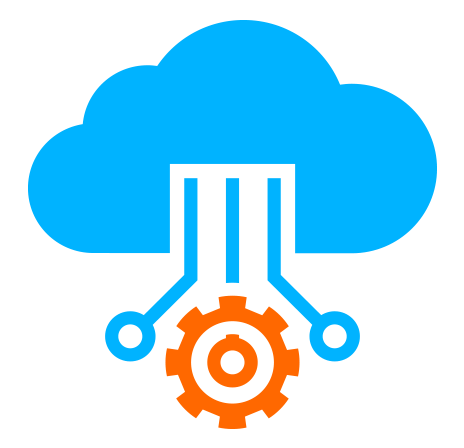 Server
Colocation
Server
Colocation
 CDN
Network
CDN
Network
 Linux Cloud
Hosting
Linux Cloud
Hosting
 VMware Public
Cloud
VMware Public
Cloud
 Multi-Cloud
Hosting
Multi-Cloud
Hosting
 Cloud
Server Hosting
Cloud
Server Hosting
 Kubernetes
Kubernetes
 API Gateway
API Gateway

The NVIDIA H100 GPU is worth upgrading from the A100 if demanding AI training, large language model inference, or highly data-intensive workloads require cutting-edge performance. The H100 delivers 3x to 9x faster AI training and up to 30x faster inference speeds compared to the A100 while offering greater memory bandwidth, advanced architectures, and enhanced scalability. However, the higher upfront cost and power requirements mean upgrading is best for users who need the highest performance and can optimize workloads to leverage the H100's full potential.
The NVIDIA A100, launched with the Ampere architecture, revolutionized AI and High-Performance Computing (HPC) with features like multi-instance GPU (MIG) technology, 80GB HBM2e memory, and excellent parallel processing. The H100, based on the newer Hopper architecture, advances AI workloads further by integrating 80GB of HBM3 memory, significantly higher memory bandwidth, and fourth-generation Tensor Cores alongside a dedicated Transformer Engine to boost large language model performance.
|
Aspect |
NVIDIA A100 |
NVIDIA H100 |
Impact |
|
Architecture |
Ampere |
Hopper |
More advanced architecture in H100 |
|
CUDA Cores |
6,912 |
18,432 |
2.7x more cores for greater parallelism |
|
Tensor Cores |
3rd Gen |
4th Gen, with Transformer Engine |
Up to 6x faster AI training speed |
|
Memory |
80 GB HBM2e |
80 GB HBM3 |
67% higher memory bandwidth |
|
Bandwidth |
2 TB/s |
3.35 TB/s |
Faster data access |
|
Power Consumption (TDP) |
400 W |
700 W |
Requires robust cooling |
|
NVLink |
600 GB/s |
900 GB/s |
50% faster multi-GPU scaling |
|
PCIe Support |
PCIe Gen4 |
PCIe Gen5 |
Higher data transfer rates |
|
Pricing (MSRP) |
~$15,000 |
~$30,000 |
Higher initial investment |
These enhancements translate into substantial gains in throughput, especially for AI training and inference involving large models.
The H100 can deliver up to 9x faster AI training and 30x faster inference speeds than the A100, particularly for large language models due to its transformer-optimized engine. Despite costing about 82% more per hour in cloud settings, the dramatically shorter runtime for tasks frequently results in lower total costs for optimized workloads.
Efficient use of the H100 reduces power consumption per computation unit and enables better utilization of multi-GPU setups due to improved NVLink bandwidth and PCIe Gen5 support. This can lead to notable savings in power and infrastructure costs over time.
- Training and fine-tuning large language models (LLMs), transformer-based AI models, and deep learning systems demanding high throughput and low latency.
- Real-time AI inference requiring rapid response times at scale.
- High-performance scientific computing involving double-precision floating point tasks.
- Cloud-based AI as a services and enterprises needing scalable GPU clusters optimized for multi-instance workloads.
Workload suitability: The H100’s advantages shine in large model and tensor-heavy AI workflows. For smaller or less intensive tasks, the cost and power overhead may not justify the upgrade.
Budget constraints: The initial investment and operating costs of H100 GPUs are significantly higher than A100.
Infrastructure readiness: H100’s higher power and cooling requirements necessitate suitable data center infrastructure.
Availability: Due to high demand, H100 units may be limited in supply, causing possible wait times.
Q1: How does memory bandwidth affect AI training?
A1: Higher memory bandwidth enables faster data movement between GPU cores and memory, reducing bottlenecks during AI training with large datasets and complex models, directly accelerating training time.
Q2: Can I run smaller AI workloads on an H100 cost-effectively?
A2: While the H100 is optimized for large-scale workloads, its Multi-Instance GPU (MIG) partitioning allows efficient running of multiple smaller workloads simultaneously, maximizing utilization.
Q3: How do H100 and A100 compare in cloud pricing?
A3: Hourly rates for the H100 are roughly double those of the A100, but the H100’s faster processing can reduce total job time, potentially lowering total compute costs.
Q4: Is it easy to migrate from A100 to H100?
A4: Yes, H100 supports standard AI frameworks and APIs like CUDA and TensorFlow. However, to maximize benefits, workload optimizations like mixed precision or FP8 should be adopted.
Supercharge Your AI Workloads with Cyfuture Cloud
Unlock unmatched performance and scalability with Cyfuture Cloud’s cutting-edge NVIDIA H100 GPU clusters tailored for demanding AI, ML, and HPC applications. Experience ultra-fast training and inference with seamless scalability and enterprise-grade security.
Upgrading from the NVIDIA A100 to the H100 GPU offers dramatic improvements in AI training speed, inference performance, and scalability, making it the clear choice for enterprises and researchers pushing the boundaries of large-scale AI and HPC workloads. While the upfront costs and power requirements are higher, the overall gains in efficiency, reduced training time, and enhanced capabilities justify the investment—especially when paired with an optimized cloud environment like Cyfuture Cloud. For users focused on next-generation AI and data-intensive solutions, the H100 represents a worthwhile and future-proof upgrade.

Let’s talk about the future, and make it happen!
By continuing to use and navigate this website, you are agreeing to the use of cookies.
Find out more


